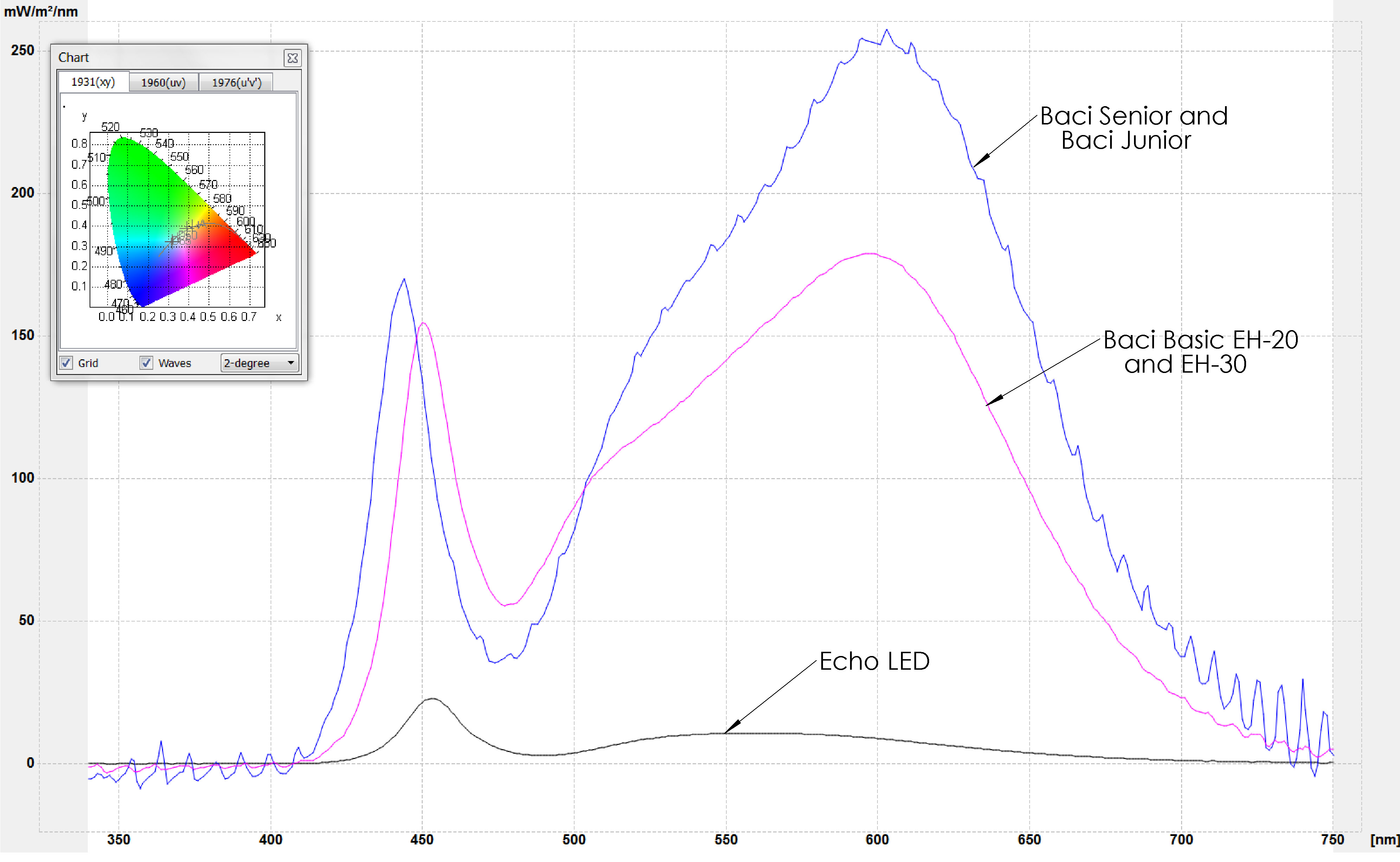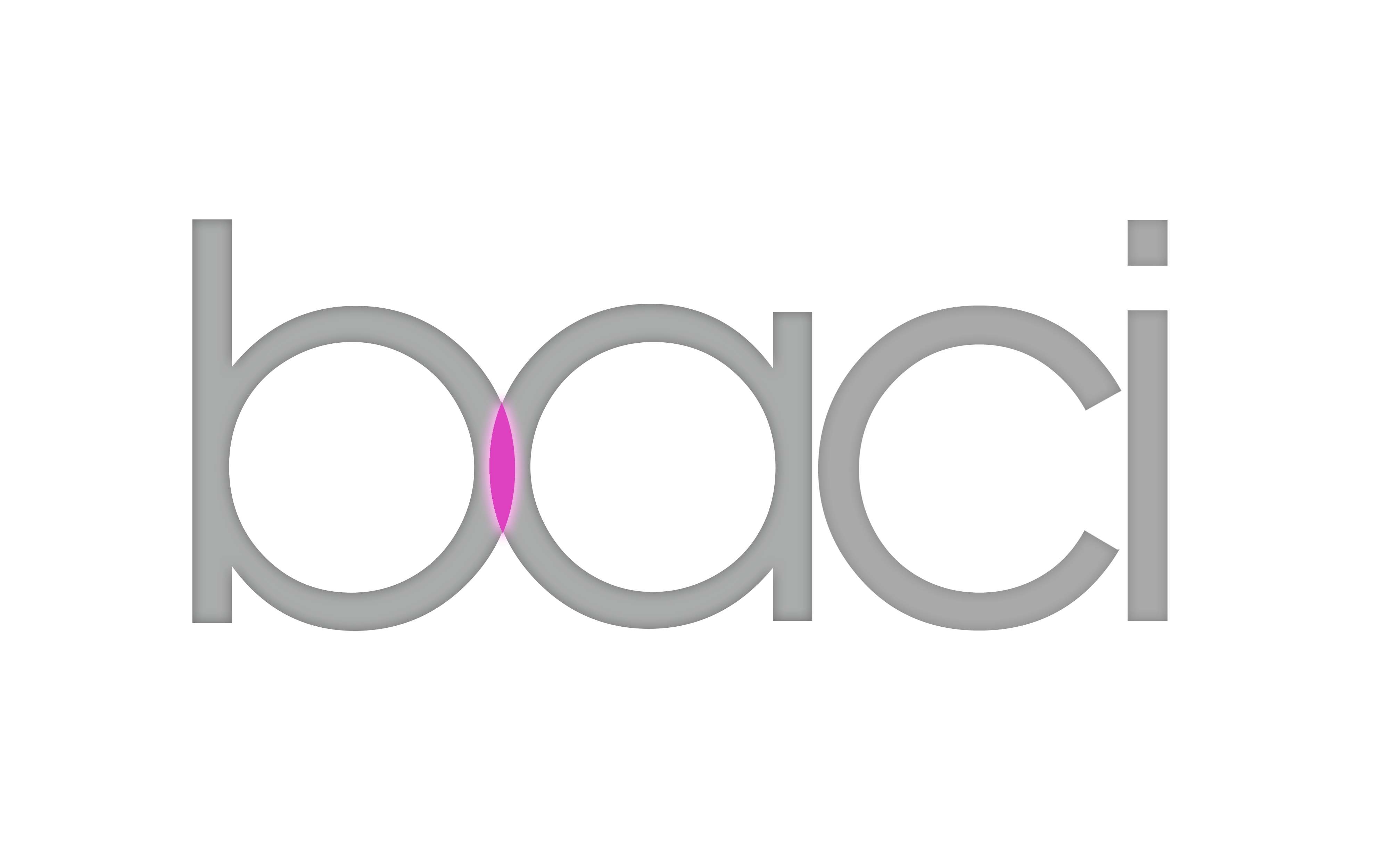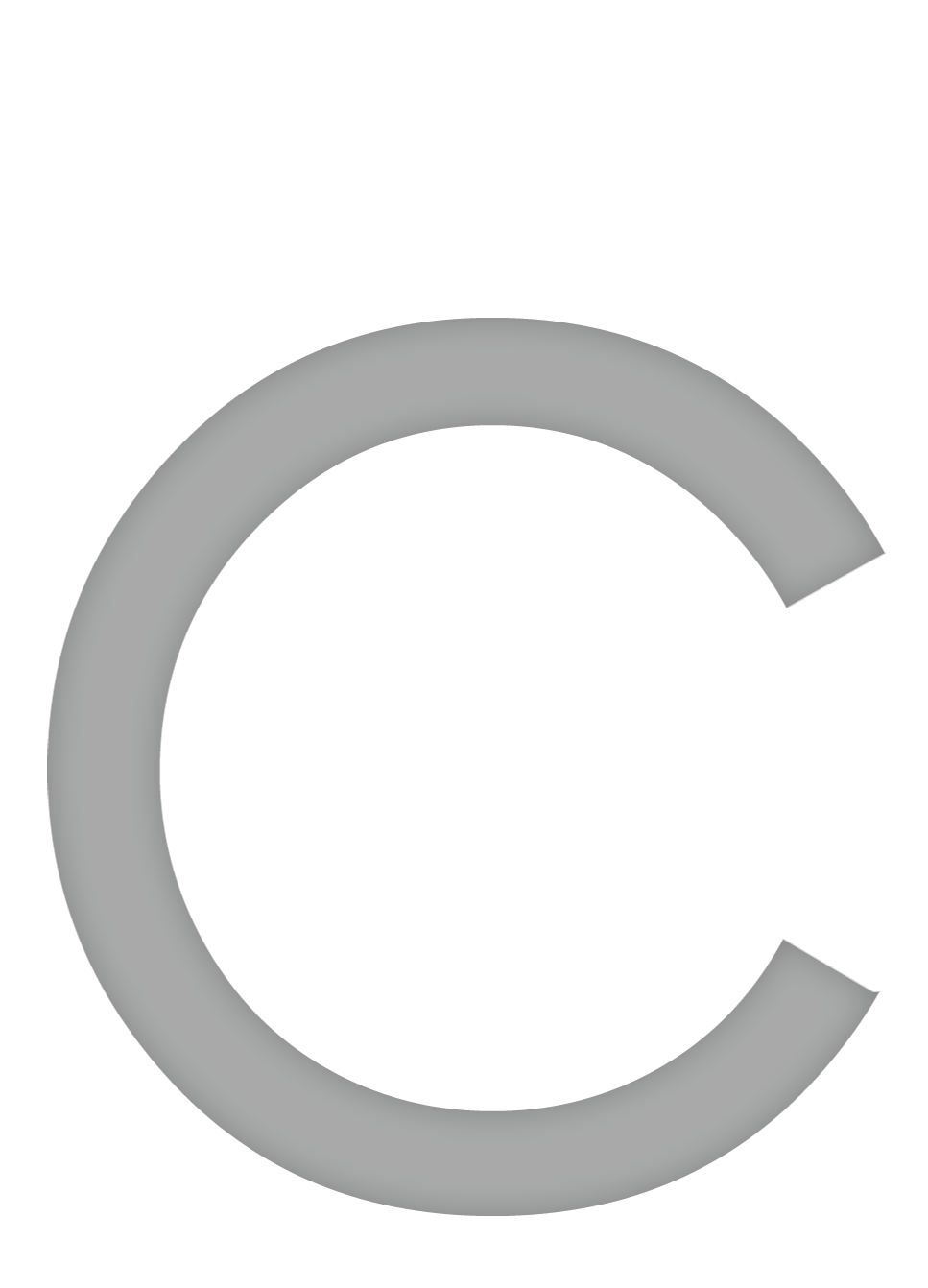Color & Light 101.
Lighting in BACI and Echo Mirrors.
Our most popular Baci mirrors use LED light sources but some models are still available with incandescent lighting for those who need to match the look in an existing installation or are not yet ready for the newest technology. Our LED mirrors offer the following advantages:
High light output • Natural white light • Accurate color rendering
Energy efficiency • Long life • Operate on universal voltage
Light Output.
The amount of light from a light source is usually measured in Lumens. A simplified technical definition of a lumen is the total amount of visible light emitted by a source. To offer a familiar reference point, a typical 25 watt incandescent light bulb emits about 230 lumens.
Light sources in Baci and Echo mirrors emit the following amounts of light:
High power LED
Baci Senior & Junior
Medium power LED
Baci Basic EH mirrors
Low power LED
Baci Basic Legacy mirrors ‐ E2‐LED, E6‐LED and E26‐LED
Incandescent
Baci Basic Legacy mirrors – E2‐ & E6 ‐H
Natural White Light.
LED’s and other light sources can produce light in a wide range of colors, however, for make-up mirrors we’re primarily interested in white light. But, as you’ve probably discovered, there are many colors of “white light” ranging from the soft warm glow of a candle to the bright blue/white of some automotive headlamps.
The color, or hue, of light is referred to as its Correlated Color Temperature (CCT) and is usually measured in degrees Kelvin. In technical terms CCT is roughly the color of a block of carbon heated to a specific temperature on the absolute (Kelvin) scale. For example, the color temperatures of some common light sources are:
40 watt incandescent lamp • 2500º K
Cool white fluorescent lamp • 4200º K
Noon daylight • 5500º K
Light from Baci and Echo mirrors is targeted at the following color temperatures:
High power LED • 3500º K • Baci Senior and Junior Mirrors
Medium power LED • 4000º K • Baci Junior LED Mirrors
Low power LED • 5000º K • Baci Basic LED Mirrors
Low power incandescent • 2700º K • Baci Incandescent Mirrors
Since our environment includes incandescent and fluorescent lighting as well as all sorts of daylight we tend to perceive color temperatures between 3000°K and 4000°K as natural. Thus the light from a Baci Medium or High Power LED mirror provides undistorted, natural illumination for the user.
Most colors of light can be produced by mixing various amounts of Red, Blue and Green light as seen in the charts below. The chart on the left shows that combining red, green and blue light produces white light. Variations in the intensity of each component produce the many different shades of white that we see. The chart on the right shows a range of colors produced when various proportions of red, green and blue light are mixed. Note that white light is only seen in a small area near the middle of the chart.
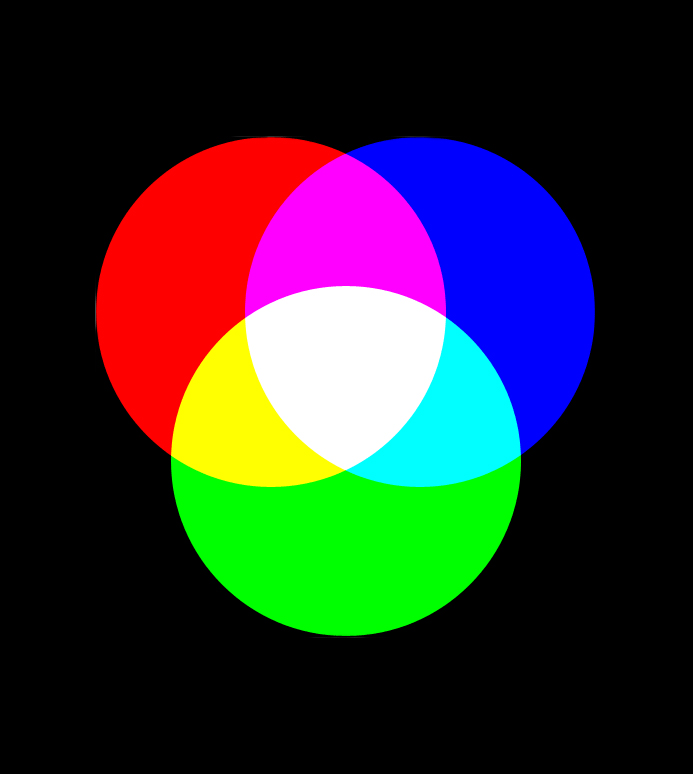
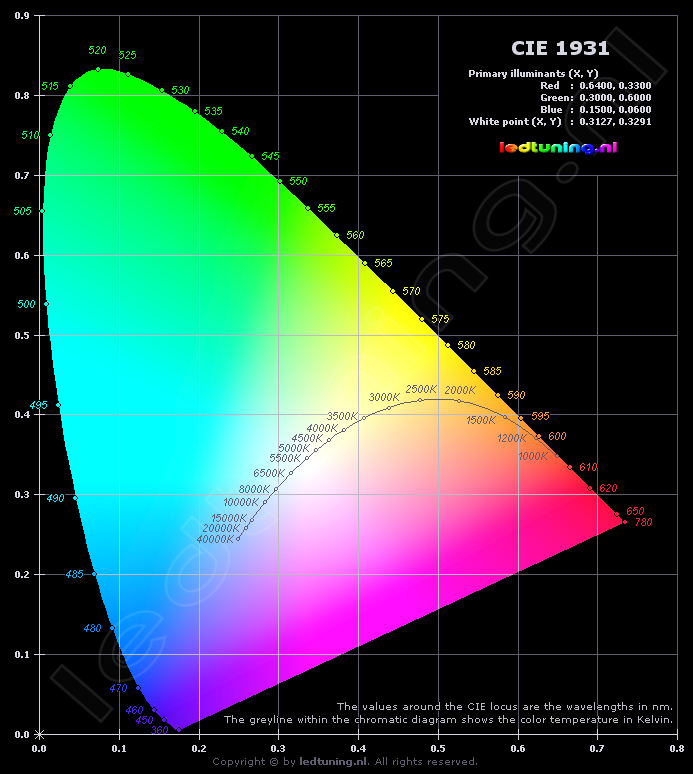
Accurate Color Rendering.
The CCT describes the color of light emitted by a light source. But we also have to look at another number to consider how that light makes things look. That number is the Color Rendering Index or CRI. It is an indication of how natural things look under light from a specific light source compared to how they look under daylight.
Overall, light is made up of a spectrum of wavelengths and intensities and different light sources contain different spectrums. That can be true even when the color (CCT) of the lights appears to be the same. We perceive objects based on the spectrum they reflect to our eyes. So when an object is illuminated by sources with different spectrums it will look somewhat different under illumination from each source.
CRI is a means to evaluate these differences. CRI is computed from a measurement of how several specific color samples look under light from the source being tested compared to how they look under light from a reference source with the same color temperature. If you compare the CRI’s of two light sources with the same CCT the one with a higher CRI will render colors more naturally.
But remember that the CRI is only meaningful when you’re comparing light sources of the same CCT. For example both an incandescent lamp and natural sunlight have a CRI of about 100. But the incandescent lamp has a CCT of about 2500° K vs. the 5000-6000° K of the sunlight and an object seen under the incandescent illumination will look yellower than one seen in sunlight.
Typical high power LED’s in the 3000° K to 4500° K range have CRI’s of 70 to 80. Baci medium and high power LED mirrors have a minimum CRI of 80 which is one of the highest available in comparable light sources. The IES Bathroom Lighting Guide recommends a CRI of 80 or better for applying make-up.
Energy Efficiency.
LED’s (Light Emitting Diodes) produce visible light by passing relatively low power electrical current through a semiconductor. Based on the chemistry and technology the LED emits visible light and some heat. Incandescent lamps produce visible light by passing higher power electrical current through a filament. The filament gets hot enough that it produces visible light and also quite a bit of heat. LED’s are far more efficient than incandescent or even most fluorescent lamps, producing more light and less heat while consuming less energy.
Efficiency in Baci and Echo mirrors is as follows:
High power LED • 775 Lumens • 6 Watts • 129 lumens per watt
Medium power LED • 465Lumens • 3 Watts • 155 lumens per watt
Low power LED • 260 Lumens • 4 Watts • 65 lumens per watt
Incandescent • 120 Lumens • 15 Watts • 8 lumens per watt
Long Life.
LED’s tend to have very long lives in comparison to incandescent lamps. High power LED’s have an average life of as much as 50,000 to 100,000 hours where incandescent lamps have an average life of about 1000 hours. In either case consider that a make-up mirror is typically used for less than 30 minutes per day and that translates to about 5 years for an incandescent light source and 100 years or more for a LED light source.
Universal Voltage.
Baci LED mirrors are designed to operate on virtually all international electrical supplies. In other words, they’ll work in countries like the US where the standard current is 120 Volts at 60 Hertz, or in countries like Germany where the standard current is 240 Volts at 50 Hertz or even in Japan where the current is 100 Volts and can be at either 50 Hertz or 60 Hertz.
Baci LED mirrors include an electrical device that converts the input power to the characteristics that the LED’s need. These devices are not suitable for use on dimmers or some power management systems that alter the normal supply parameters. If you need to operate on one of these systems please contact us.
Incandescent mirrors are typically supplied for operation on 120 volt.
Baci mirrors furnished with a cord and plug are typically supplied with US style plugs but can be supplied with plugs for most other countries on special order.

